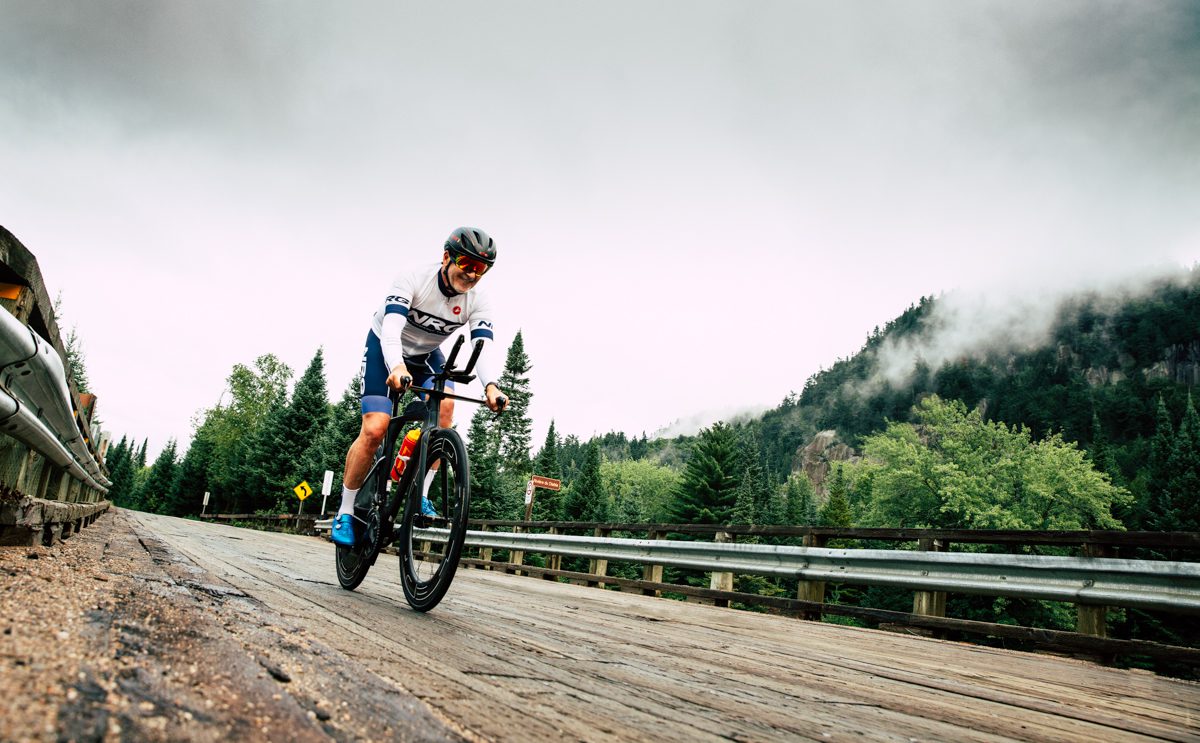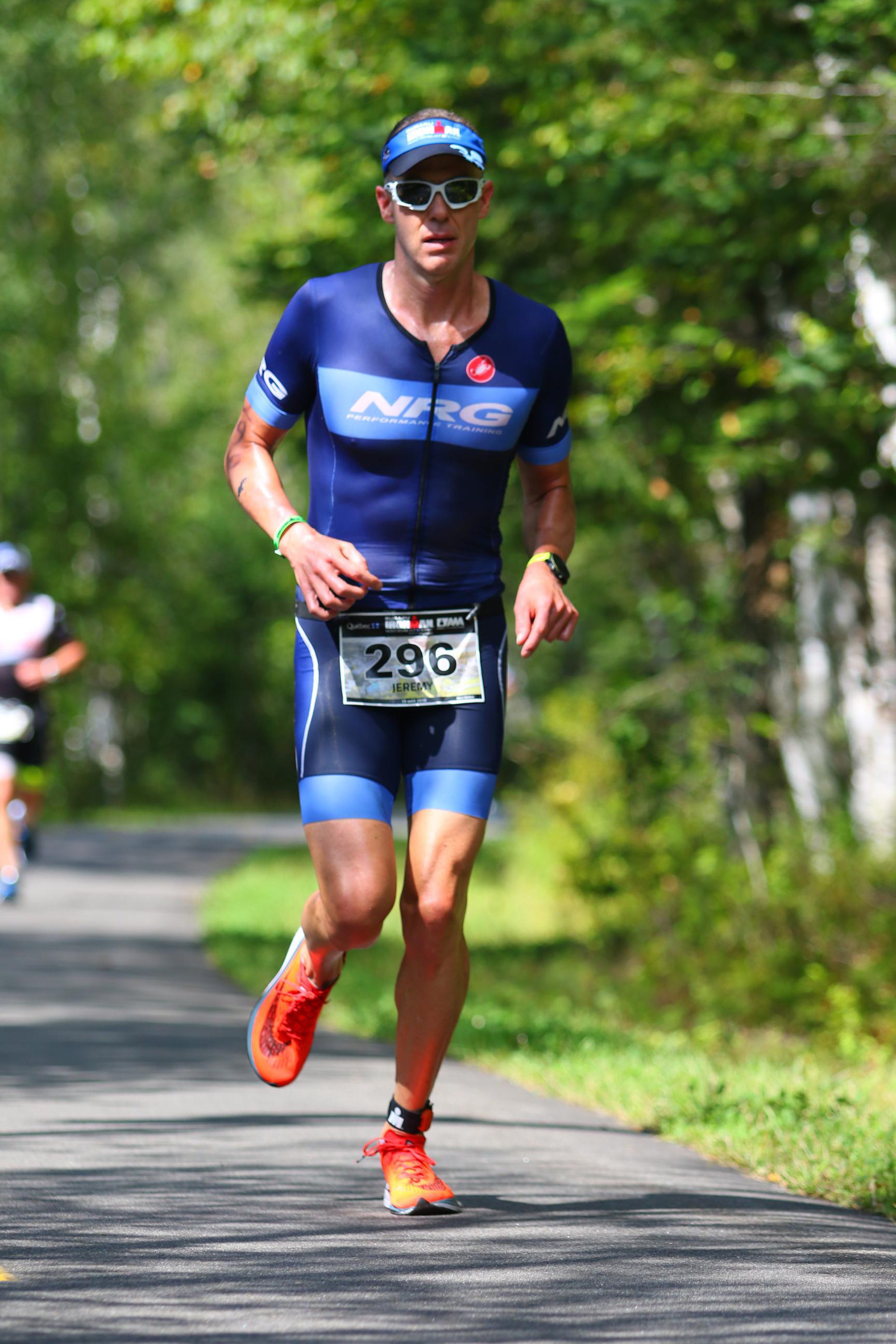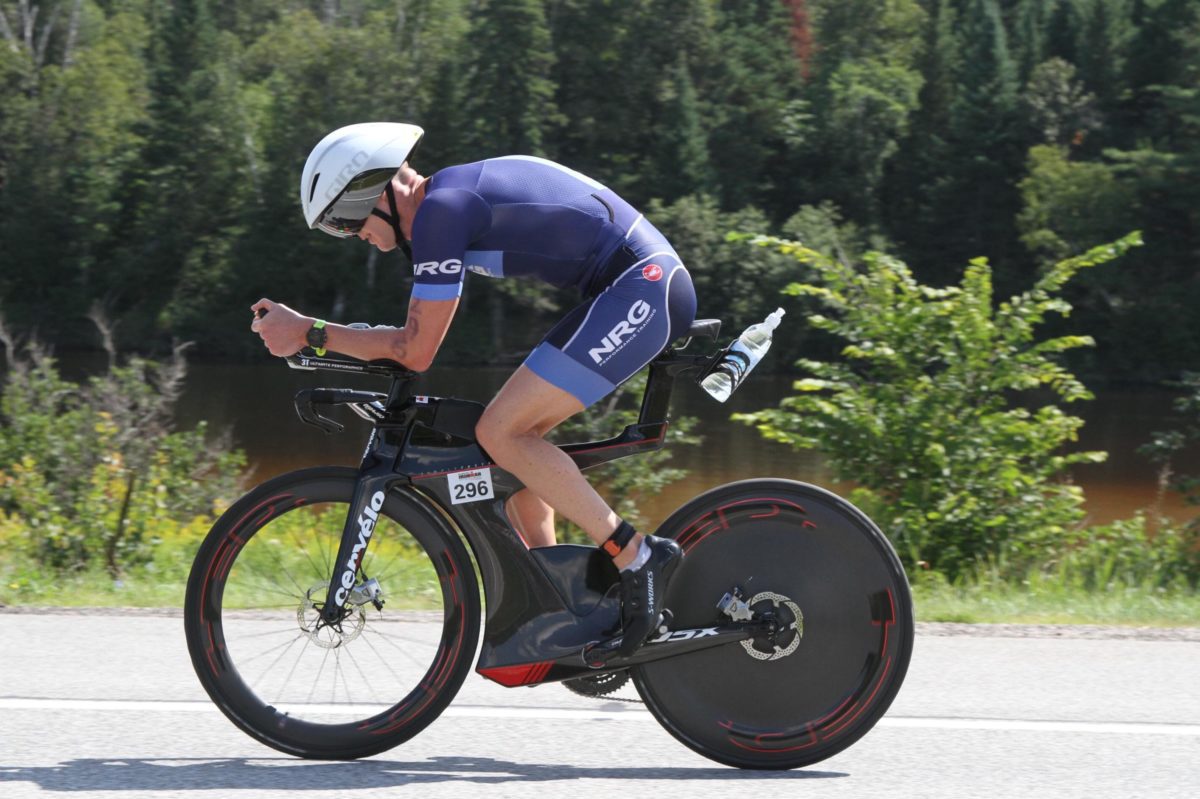Training for any standard triathlon can be daunting. But, training for the 3.8K of swimming, 180K of biking and 42.2K of running, that’s another an animal.
The hours needed to train for an Ironman are exponentially higher than those compared to a standard triathlon, but the hours of training to qualify for the World Championship are mind-boggling.

Experience versus Performance
Nigel Gray, a former Canadian professional triathlete, 8:56 Kona finisher and coach at Nigel R Gray Performance Training (NRGPT), says getting a few Ironmans under your belt is the best way to progress into training for Kona. “In the end, it’s your performance on race day that gets you a spot. So, you need to perform at a reasonable level in order to start thinking about qualifying for Kona,” shares Gray.
With races offering 30 to 80 total qualifying spots to Kona, you’ll need to place high in your age category to qualify. “For the smaller age groups, you’ll need to be first or second in your age group to get a spot. In the bigger age groups, you’ll still need to be top three or five,” says Gray.
The training involved
In order to compete at a high level in any age group, there’s a sacrifice of time that goes into preparing your body to perform. How much of a time commitment? “Most of the athletes that we work with will have peak training weeks in the 20 plus hour range,” says Gray. Ultimately, those twenty hours are going to look different athlete to athlete, but a constant among high-performance athletes is focusing on your goals, strengths and weaknesses. “There’s no one way to train or qualify for Kona. It’s going to take a balanced training approach across the swim, bike and run.”
Quantity versus Quality
What can’t be underestimated is the quality of training. Gray reinforces this by elaborating on a hypothetical example of two triathletes. “If you spend 15 hours a week in Z1 that’s not going to be as much overload as someone who spends five hours in Z1, three hours in Z2 and two hours in Z3/4 but only ten hours of total training.” This is why Gray will get his athletes to train at different intensities during long training sessions. “On the weekends, we’ll head up to a local lake north of the city and do an open water swim before jumping on the bikes. During the ride, we do sets of sustained power at 70.3 or Olympic intensity. Then sometimes we’ll do a brick run after.”

Age group success stories
For Gray and the NRGPT team, this approach seems to have worked out pretty well, with five to fifteen athletes qualifying for Kona each year. Recent Kona qualifier Jeremy Valeriote says, “The keys for my improvement include consistent training, hard work, family support, coaching and the desire to improve.”
Related: How to qualify for Kona
Then there are the immortals among us who have done multiple World Championships. The husband and wife duo of Fiona and Brandon Whitby have qualified for Kona three years in a row. Between the two of them, they have done nine IRONMAN World Championships. When two highly successful triathletes and working professionals live under the same roof, balance is tough. “Balance is definitely a challenge, but Brandon and I are very fortunate to both be doing the same sport,” says Fiona. Since having a son, Myles, the balancing act gets a bit more complicated. But, the two have each other’s back. “Fiona and I are a rare couple. We both love the sport, have been at it a very long time and are pretty good at it (as far as amateurs go). We support each other in our training,” says Brandon.
How to monitor your training
The top training tool of choice between Valeriote and the Whitby’s is the power meter. Brandon says a power meter is a tool that doesn’t lie. “If used properly, it’s the device that will improve the effectiveness of the hours spent training more than anything.” This echoes his coach (Nigel Gray) when he explains, “It’s not just about quantity, but also quality.” Fiona finds it’s in the post-ride analysis, where the power meter is most beneficial. “The analysis after helps to dial in specific workouts, and I can see how ‘exactly’ a race has been ridden.”
The Cervélo effect
Not surprisingly, all three race on Cervélo bikes – the number one bike at Kona the last 13 years. “I don’t even know how many Cervélo’s I’ve had over the years,” says Brandon. “I’ve always believed that Cervélo’s are fast and slippery through the wind. They allow me to have an aggressive position.”
World-renowned, Cervélo has done the unique job of combining comfort with performance on the bike. “Cervélo is like my ‘first true love.’ I truly enjoy riding them as they’re simply comfortable and fast,” says Fiona.
Come October 13th, the Kona rookie, Valeriote will be sporting the P5X on Queen K Highway and wouldn’t want it another way. “With Cervélo’s commitment to triathlon, aerodynamics, innovation, quality and service, I have not considered another bike brand.”


